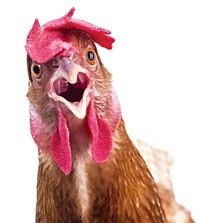Advertisement
Grab your lab coat. Let's get started
Welcome!
Welcome!
Create an account below to get 6 C&EN articles per month, receive newsletters and more - all free.
It seems this is your first time logging in online. Please enter the following information to continue.
As an ACS member you automatically get access to this site. All we need is few more details to create your reading experience.
Not you? Sign in with a different account.
Not you? Sign in with a different account.
ERROR 1
ERROR 1
ERROR 2
ERROR 2
ERROR 2
ERROR 2
ERROR 2
Password and Confirm password must match.
If you have an ACS member number, please enter it here so we can link this account to your membership. (optional)
ERROR 2
ACS values your privacy. By submitting your information, you are gaining access to C&EN and subscribing to our weekly newsletter. We use the information you provide to make your reading experience better, and we will never sell your data to third party members.
Forensic Science
Newscripts
Kitty crimes and feline feelings
by Krystal Vasquez
November 27, 2023
| A version of this story appeared in
Volume 101, Issue 39
Cats catching criminals

Any criminals out there should consider leaving cat lovers alone. Their feline friends will snitch on you. A new tool developed by researchers could turn a single cat hair into useful forensic evidence, which is especially important when other forms, like human DNA, are scarce (Forensic Sci. Int.: Genet. 2023, DOI: 10.1016/j.fsigen.2023.102944).
“Cat hair gets everywhere,” says Mark Jobling, a genetics professor at the University of Leicester. “They’re basically tagging all of your possessions.” Cats also leave their hairy mark on anyone that comes a-knocking with nefarious intent, which could prove “forensically valuable,” he explains.
That said, using cat hair to solve crimes isn’t new. Back in 2013, Jobling and his colleagues helped police solve a murder case by performing DNA analysis on feline fluff found at a crime scene. “They got a match between the hairs on [an] item and a suspect who owned a cat,” Jobling tells Newscripts. Case closed, right?
Unfortunately, naturally shed cat hair contains only mitochondrial DNA, which is much less variable than nuclear DNA across a given population. Under normal circumstances, the chance that two random cats have the same mitochondrial DNA is around 21%. The only reason the hair served as a lucky break for the 2013 case was because the kitty in question had an uncommon mitochondrial variant. “So actually, it helped the case,” Jobling explains.
But the experience inspired him and his colleagues to find a way to improve the usefulness of cat hair as evidence. They developed a new test in which they sequenced the hair’s entire mitochondrial genome instead of only a portion of it, as many existing tests do now. “That allows us to reduce the chance of two random cats being identical from 21% to 3%, which is about as good as you can get,” Jobling says.
So, although cat hair isn’t going to break every case, the team’s work has made it more valuable. “With all police work, the more pieces you put together in a puzzle, the more chance you have of solving the puzzle,” Jobling says.
Feline faces

Cats get a bad rap for being stoic and emotionless. But according to a new study, cats are wildly expressive creatures.
Researchers Brittany Florkiewicz and Lauren Scott found that cats regularly communicate with one another using 276 facial expressions (Behav. Processes 2023, DOI: 10.1016/j.beproc.2023.104959). That’s almost on par with chimpanzees, says Flor- kiewicz, an evolutionary psychologist at Lyon College.
What’s more, Florkiewicz and Scott categorized a large portion of the facial expressions they observed as friendly—around half—compared with the 37% that were considered more aggressive. These observations break the stereotype that “cats don’t produce a lot of facial expressions, and when they do, it’s for agonistic purposes,” Florkiewicz tells Newscripts. “It’s just great to have the research to back that up.”
Not only does this research break stereotypes, but it can also help shelters or cat owners looking to adopt a second or third cat. In fact, Florkiewicz put her research to the test after adopting her latest feline addition to the family, Darth Vader.
When introducing Darth Vader to her other cat, Char, Florkiewicz made sure to pay close attention to their facial expressions. Sure enough, there was a moment while the two cats were playing when Char turned her ears back and constricted her pupils, an unfriendly sign.
“That let us know that this isn’t going well. We might need to separate them for a bit,” Florkiewicz says. This research, she hopes, will help other people assess the relationship between their cats.
Krystal Vasquez wrote this week’s column. Please send comments and suggestions to newscripts@acs.org.





Join the conversation
Contact the reporter
Submit a Letter to the Editor for publication
Engage with us on Twitter